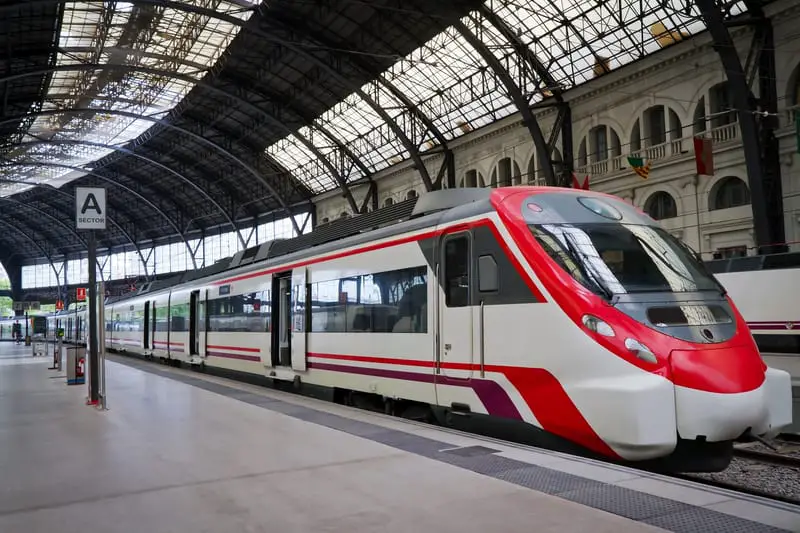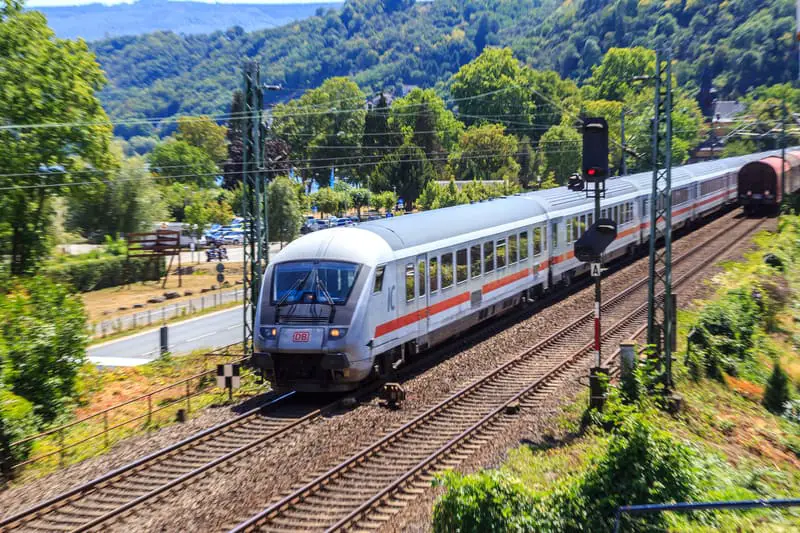
The force needed to move a long train is immense and sometimes requires more than one locomotive. An equivalent force must be applied in reverse to stop that same train.
Goods trains traveling at 55 mph with 120 fully loaded wagons need over a mile of track to stop, and passenger trains with 8 carriages traveling at 80 mph will need 1 ¼ mile to stop. To stop, a high-speed (HST) train traveling at 120 mph requires four miles (1 min and 40 seconds).
If a river is ever attempted to “sneak” across a train track while a train is approaching, they should resist the urge. From the time it takes the train driver to react and the brakes to start working, the train will probably have blown through the crossing point.
The Average Time It Takes To Stop A Train
While there are exceptions, the average freight train consists of the locomotive unit and 90 to 120 freight cars.
Assuming the track is level, the weather is dry, the freight train brakes work correctly, and the train moves at 55 miles an hour (88km/h.) Under these circumstances, stopping the train may take a mile or longer after the driver applies the emergency brake.
A faster passenger train moving at 80 miles an hour (128 km/h) on the same track length and with the same weather conditions needs 1 ¼ mile to stop.
High-speed trains (HST), which operate at 120 miles per hour (200 km/h) or more, take roughly over 4 miles (6000 meters) and 1 minute 40 seconds to come to a complete stop.
While extensive research is being conducted to try and reduce this, the amount by which the distance will become shorter is minimal.
How Hard Is It To Stop A Train?

Stopping a train requires lots of “work” to counter the massive momentum driving it forward.
The “work” is the amount of energy that has to be applied to the system needed to reduce the train’s speed over the distance it takes to stop it.
The work relates the energy required to change two types of energy:
- The train’s Kinetic Energy
- The train’s potential energy
The Trains Kinetic Energy
The change of the kinetic energy is calculated as the difference between the energy in the train (speed of the train) when the train driver applies the brakes until the energy that remains in the system is zero when the train comes to a complete stop.
At this point, the train’s speed is zero, and so is the kinetic energy.
The Trains Potential Energy
The change in the train’s potential energy (change in height due to the gradient of the track) relates to the height of the train’s center of mass due to the slope on which the train is on.
The difference in the height of the train at the point at which the brake was applied and the height at the stopping point is the potential energy.
It Is Difficult To Guarantee A Trains Stopping Distance
It isn’t easy to precisely calculate the stopping distance required for the train.
The reason for this is that stopping distances can be significantly affected by variables such as the condition of the train, its speed, weight, braking systems, the track gradient, and the environmental conditions at the time.
The variables which have to be brought into an equation to calculate the stopping distance of a train include the following:
- The trains speed at the moment when the brakes are applied
- The train’s driver’s reaction time (The time from when the obstacle was first seen to the moment when the brakes were applied
- The train’s brake response time is when it takes the mechanical devices to activate the brakes, which then apply friction pressure on the train wheels – after the driver has applied them
- The friction coefficient is reduced by the friction between the wheel and the track (In wet, icing, and snowy weather conditions
- The train brakes’ capability takes into account the system’s state of wear
- The train’s mass and how this is distributed through the length of the train
- The weight of the cargo in each freight wagon or passenger carriage
- The track gradient (Potential energy) is the difference in height at which deceleration began and the height at which the train stopped (whether the track is level, slopes up, or slopes down)
When the industry members calculate estimated stopping distances, they assume that the train’s brake system is in good order and works perfectly. They also presume that the tracks and wheels have sufficient adhesion and that the maximum braking power is available when the systems are applied.
This means that warning signs placed along the track should be considered in relation to the actual track conditions.
When water, ice, or hail is on the tracks, and pedestrians or motor vehicles are crossing it, they should assume that a train they can see cannot stop in time if the vehicle or person gets stuck.
The takeaway from this point is that anyone wishing to cross railway tracks should allow a substantial margin of error for possible imperfect conditions.
Trains Have The Right Of Way
Trains cannot swerve out of the way to avoid an obstruction, and the force involved in moving one cannot be easily reversed. Even if a train driver obeys all the rules and travels at the required speeds, it still takes a long time to stop.
Because of this, the train has absolute right of way, and it is the responsibility of all other vehicles or pedestrians to ensure that they do not present as an obstacle to the train.
Sadly, many YouTube videos show vehicles moving too slowly or that stall over an unguarded crossing only to have a high-speed train plowing through them, causing untold injury.
Even if the train crossing is guarded and has warning lights and sirens, the driver or pedestrian should always watch a train that may still be moving.
Conclusion
It takes between one and four miles for different types of trains, running at different speeds, to a stop. This is often not appreciated by people wanting to cross a track, and the ensuing carnage is always impressive, albeit very tragic.
